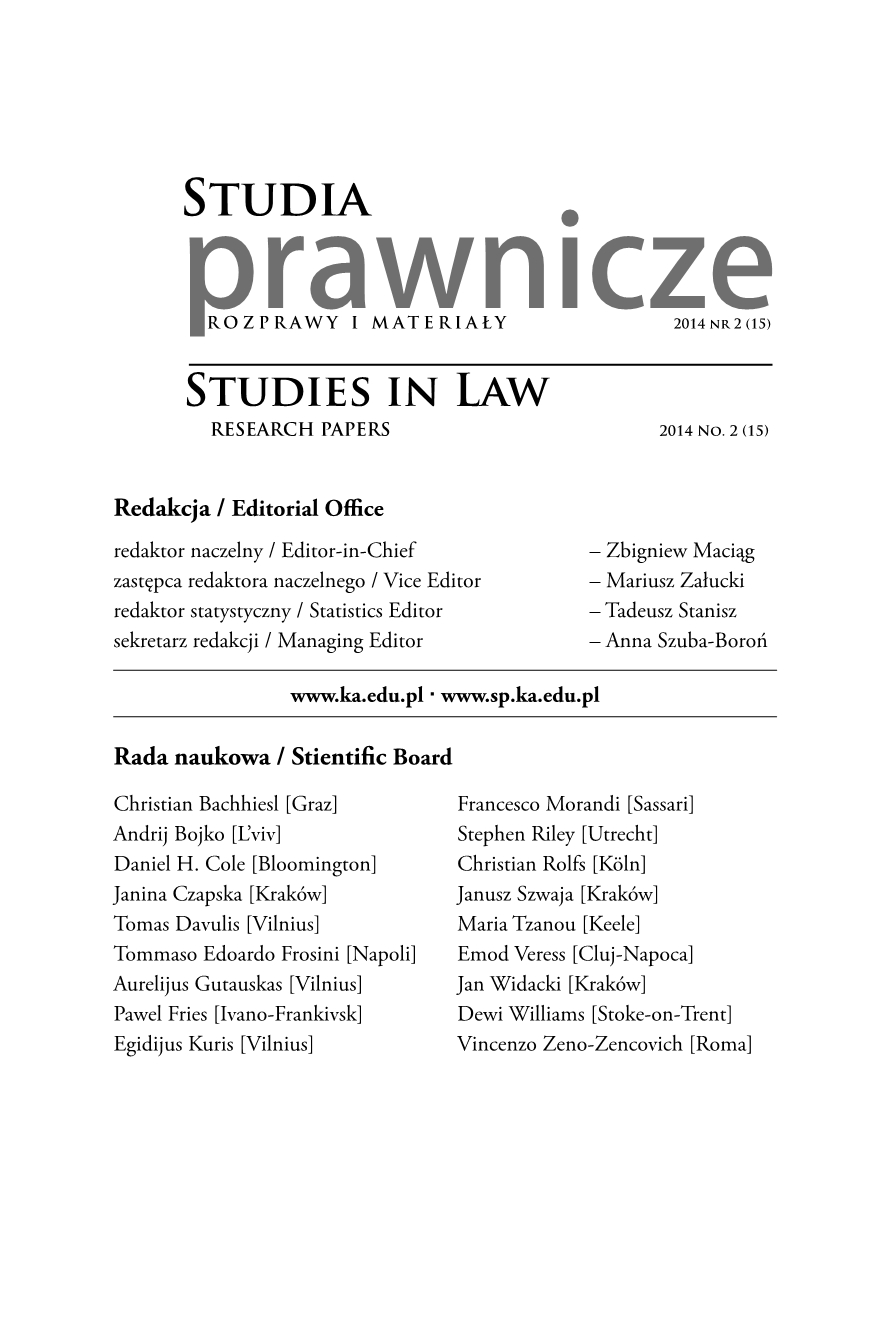Znamiona ilościowe w procesie kontrawencjonalizacji w kontekście zasady nullum crimen sine lege – wybrane zagadnienia
Quantitative traits in the process of contraventionalisation in the context of the principle of nullum crimen sine lege – selected issues
Author(s): Renata PawlikSubject(s): History of Law, Criminal Law, Criminology, Penology
Published by: Oficyna Wydawnicza AFM Uniwersytetu Andrzeja Frycza Modrzewskiego w Krakowie
Keywords: process of contraventionalisation; principle nullum crimen sine lege; misdemeanour; offences; "petty offences”;
Summary/Abstract: As for now, the Polish law of misdemeanours has not worked out a uniform concept. Historically, its developments have assumed various conceptual structures – starting with an administration type of model through the current one that comes closer to that of a criminal liability. As early as in 1918, while developing a concept of the law of misdemeanours, it was disputed whether misdemeanours should be recognised as a separate category, including cases of violation of the order, or as those that were primarily related to the sphere of administrative actions or whether they should be established on the basis of that social harm they caused and to assume that a misdemeanour was a petty form of an offence. The current model that has been worked out in the course of transformation is characterised by a significant lack of cohesion, and this assessment is even more substantiated by implementation of a concept of the socalled hybrid offences. The concept itself consisting in the diversification of liability by creating the so-called hybrid offences is a relatively new solution under the Polish system which raises significant doubts, largely in terms of its theoretical aspects, and also the one that creates serious practical issues (e.g. in 87 of the Code of Misdemeanours and under 178a of the Polish Penal Code). Conducting research within the planned extent process of contraventionalisation and principle nullum crimen sine lege has been assumed to provide for working out the basis for adopting coherent and uniform solutions with regard to the liability for what is referred to “petty offences,” and then allow undertaking further research, for example, into specific Polish solutions concerning offences and misdemeanours against safety in traffic in terms of clear limits and nature of such a liability which would serve as a reference point in legislation works in the future.
Journal: Studia Prawnicze: rozprawy i materiały
- Issue Year: 15/2014
- Issue No: 2
- Page Range: 111-146
- Page Count: 36
- Language: Polish

